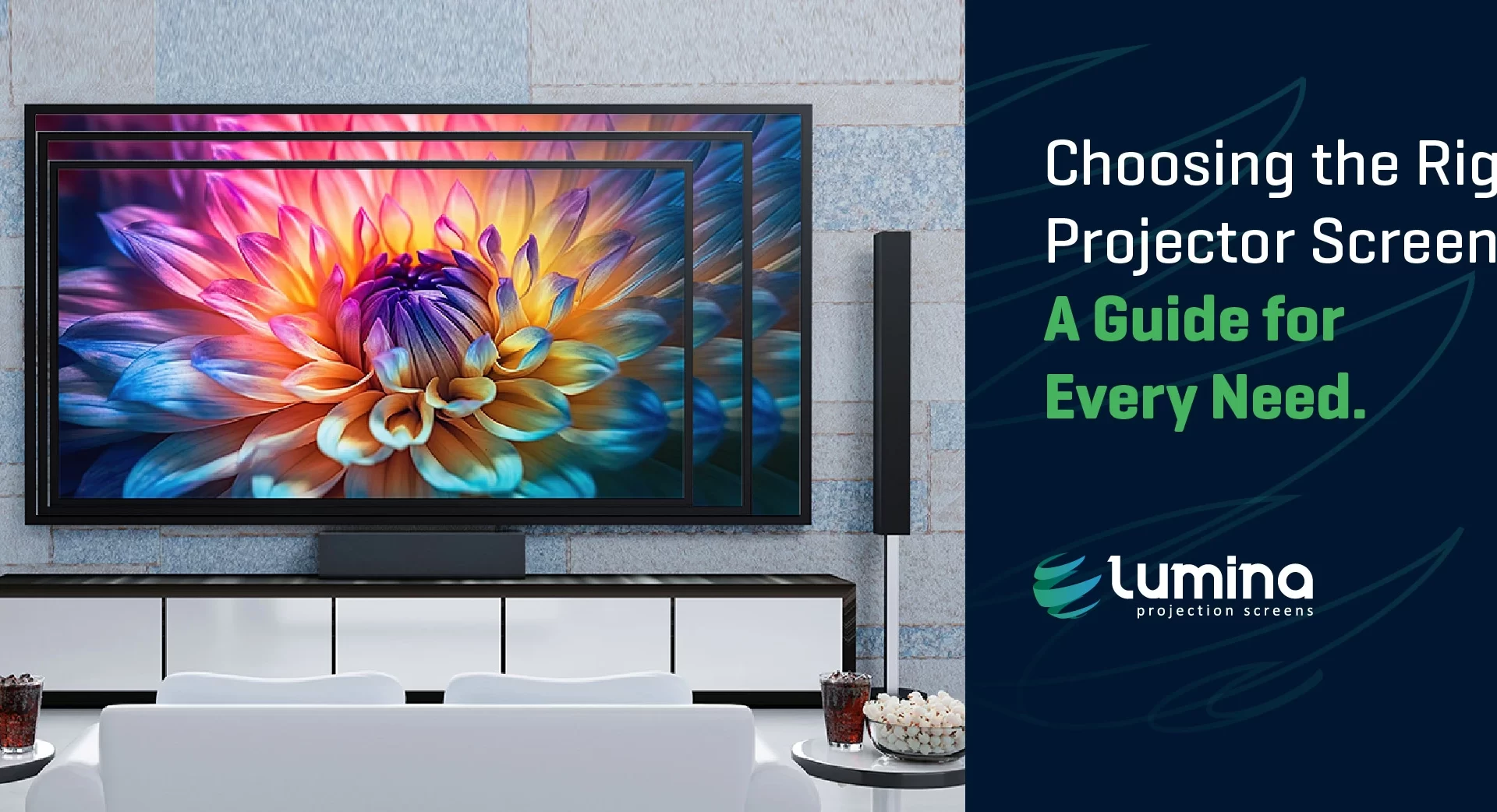
Home entertainment systems continue to rise in popularity, driven by the desire for cinema-quality experiences at home. The projector screen plays a crucial role in achieving this. Selecting the right screen enhances the viewing experience, ensuring sharp images and vibrant colors. This blog post aims to guide you through the essential factors to consider when choosing a projector screen for your home theatre.
I. Considerations for Room Size and Layout
A. Assessing Available Space for Optimal Screen Size
The size of your room significantly impacts the screen size you should choose. Measure the available wall space and ensure there’s adequate distance between the screen and the seating area. Larger rooms can accommodate bigger screens, providing a more immersive experience.
B. Determining the Ideal Screen Aspect Ratio for the Room
Aspect ratio refers to the proportional relationship between the width and height of the screen. Common aspect ratios include 4:3, 16:9, and 2.35:1. The 16:9 ratio suits most modern home theatres, providing compatibility with HDTV and many streaming services. Assess your room’s layout and viewing habits to choose the best aspect ratio.
C. Considering Viewing Angles and Seating Arrangements
Viewing angles influence the clarity and brightness of the projected image from different positions in the room. Arrange your seating to ensure all viewers have a clear line of sight. For optimal results, position the seats within the recommended viewing angle range specified by the screen manufacturer.
Leor UST by Lumina Screens utilizes micro-meter-structure coating techniques. The lenticular structure enhances the immersive viewing experience, shielding incoming light. It also comes with 16k resolution and high ambient light shielding, & has a viewing cone of nearly 170 degrees which means that every seat in the room is the best seat with Leor UST.
II. Understanding Screen Materials and Features
A. Overview of Different Screen Materials
Screen materials vary in their ability to reflect light and enhance image quality. Matte white screens offer versatile performance in various lighting conditions. Grey screens increase contrast, ideal for rooms with ambient light. Ambient light-rejecting (ALR) screens block unwanted light, ensuring vivid images even in well-lit rooms.
B. Evaluating Gain and Viewing Angles for Various Screen Materials
Gain measures the reflectivity of the screen surface. Higher gain screens reflect more light, resulting in brighter images, but may narrow the viewing angle. Lower gain screens offer wider viewing angles, maintaining image quality from different positions in the room. Balance gain and viewing angle to match your room’s lighting and layout.
III. Compatibility with Projector Type and Technology
A. Ensuring Compatibility with Projector Resolution and Aspect Ratio
Match your screen to the projector’s resolution and aspect ratio. Higher resolution projectors, like 4K models, require screens that can display the fine details they produce. Ensure the screen’s aspect ratio aligns with the projector’s native output.
B. Considering the Projector’s Throw Distance and Lens Shift Capabilities
Throw distance, the space between the projector and the screen, affects image size. Measure your room to ensure the projector can achieve the desired image size. Lens shift capabilities allow for flexible projector placement, accommodating various room configurations.
C. Compatibility with Specific Projection Technologies
Different projection technologies, such as DLP, LCD, and laser, have unique characteristics. DLP projectors offer high contrast, while LCD projectors provide vibrant colors. Laser projectors deliver bright images with minimal maintenance. Choose a screen compatible with your projector’s technology to optimize performance.
IV. Installation and Setup Considerations
A. Assessing Mounting Options
Decide between wall-mounted, ceiling-mounted, or freestanding screens. Wall-mounted screens offer a permanent setup, while ceiling-mounted screens save wall space. Freestanding screens provide flexibility, allowing you to move the screen as needed.
B. Understanding Installation Requirements and Complexities
Installation complexity varies based on the screen type and mounting option. Wall and ceiling mounts require precise measurements and secure attachments. Motorized screens need electrical connections. Consider the installation requirements before purchasing.
V. Budget and Value Considerations
A. Setting a Budget and Prioritizing Features Accordingly
Determine your budget and prioritize features that enhance your viewing experience. Essential features include the right size, aspect ratio, and material. Additional features like motorization and tensioning depend on your budget.
B. Evaluating the Long-Term Value and Durability of Different Screen Options
Consider the durability of the screen material and construction. High-quality screens may cost more upfront but offer better performance and longevity. Assess long-term value against initial cost.
C. Considering Potential Cost Savings versus Future Upgradeability
Balance immediate cost savings against future upgrade potential. Investing in a quality screen now may prevent the need for replacements or upgrades. Choose a screen that meets your current needs while allowing for future advancements in projector technology.
VI. Conclusion
Choosing the right projector screen involves assessing room size, screen materials, projector compatibility, installation options, and budget. Selecting the optimal screen ensures an immersive home theater experience. Evaluate your specific needs and preferences to make an informed decision, ensuring years of enjoyable viewing.
FAQ’s
- Date - May 29, 2024